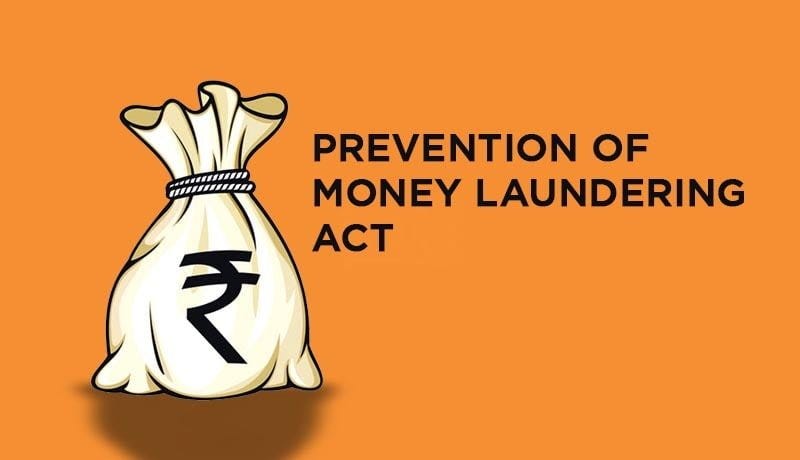#313: PMLA | All you need to know
Learn about a topic that leaves many struggling!
PMLA: Prevention of Money Laundering Act (PMLA) 2002
Enacted to combat money laundering and related financial crimes, it is imp. for Internal security, Economy (GS3)
Background and Enactment
Enacted in 2002 under Article 253 of the Indian Constitution to implement international conventions (e.g., United Nations Convention Against Illicit Traffic in Narcotic Drugs and Psychotropic Substances, 1988).
Came into force on July 1, 2005, with amendments in 2005, 2009, 2012, 2019, and 2023 to align with Financial Action Task Force (FATF) recommendations.
Primary aim: Prevent money laundering, confiscate proceeds of crime, and combat economic crimes like drug trafficking, terrorism financing, and corruption.
Objectives of PMLA:
Prevent and control money laundering.
Confiscate property derived from or involved in money laundering.
Establish mechanisms to investigate and prosecute money laundering offenses.
Promote international cooperation to combat cross-border financial crimes.
Definition of Money Laundering:
Section 3 defines money laundering as any process or activity connected with the proceeds of crime (from scheduled offenses) to project it as untainted property.
Involves three stages: Placement (introducing illicit funds into the financial system), Layering (complex transactions to hide the source), and Integration (using laundered money as legitimate).
Key Provisions:
Scheduled Offenses: Offenses listed in Parts A, B, and C of the PMLA schedule (e.g., IPC, NDPS Act, Prevention of Corruption Act, SEBI violations).
Proceeds of Crime: Any property derived from criminal activity, directly or indirectly.
Attachment and Confiscation: Authorities can provisionally attach property for 180 days, subject to confirmation by the Adjudicating Authority.
Punishment: Rigorous imprisonment of 3–7 years (up to 10 years for NDPS-related offenses) and fines.
Burden of Proof: Lies on the accused to prove that assets are not proceeds of crime, reversing the principle of "innocent until proven guilty."
Key Authorities:
Enforcement Directorate (ED): Investigates money laundering cases, attaches properties, and arrests individuals.
Financial Intelligence Unit-India (FIU-IND): Receives, processes, and disseminates information on suspicious financial transactions.
Adjudicating Authority: Confirms attachment or confiscation of properties.
Appellate Tribunal: Hears appeals against orders of the Adjudicating Authority.
Special Courts: Designated for trial of PMLA offenses.
Amendments and Recent Developments:
2012 Amendment: Expanded the definition of money laundering to include concealment, acquisition, and possession of proceeds of crime.
2019 Amendment: Made money laundering a standalone offense, not dependent on a predicate offense.
2023 Amendment: Defined Politically Exposed Persons (PEPs) as per FATF norms and included new reporting entities like chartered accountants and crypto exchanges.
Supreme Court Rulings:
Nikesh Tarachand Shah vs Union of India (2017): Declared twin bail conditions under Section 45 unconstitutional (later reintroduced in 2018).
Vijay Madanlal Choudhary vs Union of India (2022): Upheld ED’s powers for arrests, searches, and seizures.
Pankaj Bansal vs Union of India (2023): Mandated transparency in informing arrested persons of grounds for arrest.
Tarsem Lal vs Directorate of Enforcement (2024): ED cannot arrest after a Special Court takes cognizance.
Challenges and Criticisms:
Broad Scope: Inclusion of minor offenses (e.g., copyright infringement) dilutes the original focus on drug money laundering.
Overreach: Alleged misuse by ED against political rivals, raising concerns about fairness.
Lack of Transparency: Enforcement Case Information Report (ECIR) is not shared with the accused, unlike an FIR.
Stringent Bail Provisions: Section 45 imposes twin conditions (prima facie innocence and no risk of reoffending), making bail difficult.
Reversal of Burden of Proof: Critics argue it violates natural justice and Article 21 (Right to Life and Liberty).
International Context:
Aligns with FATF recommendations and international treaties like the Vienna Convention (1988).
Facilitates cooperation with foreign governments for information exchange and extradition.
India’s FATF mutual evaluation (2024–25) emphasizes robust implementation of PMLA.
Relevance for UPSC:
Prelims: Focus on objectives, authorities, amendments, and key sections (3, 4, 45, 50).
Mains: Analyze PMLA’s role in combating money laundering, its challenges, and suggestions for reform (e.g., UPSC 2021 question on emerging technologies and money laundering).
Current Affairs: Recent ED actions, Supreme Court rulings, and FATF assessments are frequently asked.
Way Forward:
Strengthen transparency in ED investigations (e.g., mandatory ECIR disclosure).
Limit the scope of scheduled offenses to serious crimes.
Balance stringent provisions with constitutional safeguards to prevent misuse.
Leverage technology (e.g., AI, big data) to detect and prevent money laundering.
Get yourself on top of UPSC game with CSEWhy, attempt MCQs on PMLA and more here


